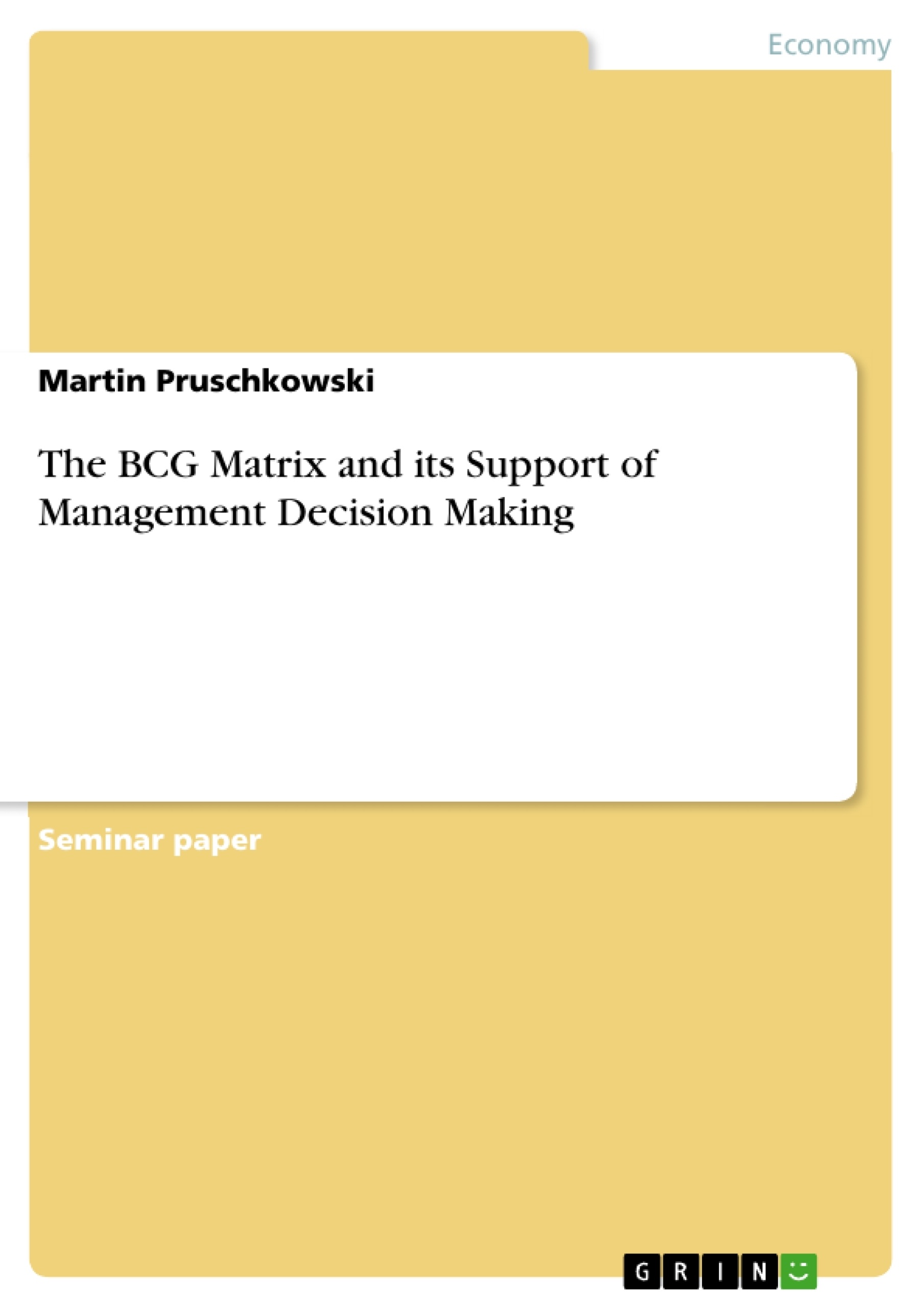This work is divided into different parts. The first part demonstrates the theory behind the BCG Matrix. The section starts with a rough overview about the history of the BCG Model followed by the objectives and the application field. The first part ends with a description of the various dimensions, the four quadrants and different standard strategies. The second section represents the case study. This part starts with a compressed overview about the TOPSIM – General Management II simulation itself and the game flow. After a short introduction of the COPYFIX Inc. (Company 1) the decisions and results will be presented. At the end of the second section the BCG Matrix will be applied to the simulation. In the last part a conclusion will complete the entire work and will answer the research question.
Inhaltsverzeichnis (Table of Contents)
- Introduction
- Problem definition
- Research question
- Structure and methodology
- The BCG Matrix
- History
- Objective and application
- Description of the BCG Matrix
- TopSim General Management II
- Overview about the game
- Game flow
- Decisions and simulation
- Introduction of COPYFIX Inc. - Company 1
- Application of the BCG model to the simulation
- Conclusion
- Summary
- Answering the research question
Zielsetzung und Themenschwerpunkte (Objectives and Key Themes)
This paper aims to analyze the Boston Consulting Group (BCG) Matrix and its application in supporting management decision-making. The paper investigates the history, objectives, and methodology of the BCG Matrix, exploring its strengths and limitations. The study utilizes a simulation game, TopSim General Management II, as a practical application of the BCG Matrix in a real-world context. The focus is on demonstrating how the BCG Matrix can be effectively applied to analyze business units and guide strategic decisions.
- The history and development of the BCG Matrix
- The objectives and applications of the BCG Matrix in strategic management
- The strengths and limitations of the BCG Matrix
- The use of the BCG Matrix in a real-world simulation environment
- The practical implications of the BCG Matrix for decision-making
Zusammenfassung der Kapitel (Chapter Summaries)
The introductory chapter defines the research problem, outlines the research question, and presents the structure and methodology of the study. The second chapter provides a comprehensive overview of the BCG Matrix, delving into its historical origins, objectives, and applications. It also discusses the model's description and key components. Chapter three introduces the TopSim General Management II game, outlining its game flow, decision-making processes, and simulation mechanics. It also presents the case study of COPYFIX Inc. - Company 1, showcasing the practical application of the BCG Matrix within the simulation environment.
Schlüsselwörter (Keywords)
The key terms and concepts explored in this paper include the BCG Matrix, strategic business units (SBUs), market growth, relative market share, portfolio analysis, decision-making, simulation games, and TopSim General Management II. The paper investigates the application of these concepts in supporting effective management decision-making.
- Citar trabajo
- Master of Business Administration (MBA) Martin Pruschkowski (Autor), 2015, The BCG Matrix and its Support of Management Decision Making, Múnich, GRIN Verlag, https://www.grin.com/document/432963



